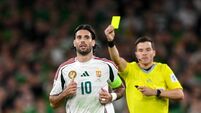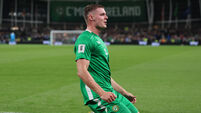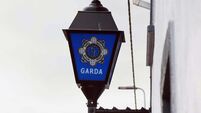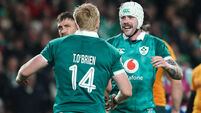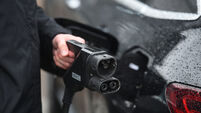18 questions for Irish football in 2018

The future of at least five players is in doubt as the timebomb on an ageing Ireland team is set to detonate. John O’Shea will be hitting 38 and Wes Hoolahan nearing 37 by the time of the next Euro qualification phase in March 2019 and so are likely to bow out of international football. Less certain are the plans of Jon Walters, Daryl Murphy and Glenn Whelan but, still, an exodus is imminent.
It took him five months to rubberstamp his last deal in 2016 after verbally agreeing the contract and there’s no sign of the latest contract being formalised. O’Neill’s appearance at Abbotstown and the FAI Christmas party this month, however, does allay concerns about his future which he instigated himself by being non-committal straight after the Danish pasting.
The convoluted new series to replace friendlies will be road-tested from September with the draw on January 24. Ireland will be grouped with two other nations from the League 2 section except Sweden, Bosnia-Herzegovina or Ukraine, but it won’t be known until June 2019 whether success will clinch one of the four places on offer for Euro 2020. Promotion and relegation only add to the confusion.
Yes. Ireland has won the honour of hosting the draw at the national convention centre on December 2, when they will either be a second or third seed in the pool dependent on how they finish in the UEFA Nations League. The top two teams qualify automatically for the finals, with Dublin one of 12 cities to stage games in a pan-European format.
After the saga surrounding Jack Grealish, any English-born player in the Irish ranks on the rise is susceptible to an approach by his homeland. The talented West Ham defender Rice has already rebuffed approaches yet, with Gareth Southgate assured of remaining at the helm for Euro 2020, a meeting with the teen during the year is on his agenda.
While the club’s long affinity with Ireland has waned since Steve Finnan’s departure, four youngsters of supreme quality are making waves at Anfield.
Cork goalkeeper Caoimhin Kelleher is closest to the first-team picture, having been part of the squad for the Merseyside derby, but Corey Whelan recently signed a contract extension and Conor Masterson has been on the bench for League Cup duty. Then there’s younger striker Glen McAuley.
Once again, Seamus Coleman and the Everton contingent soared highest last term in seventh spot but Burnley are making a fist of usurping them this time around.
Jeff Hendrick & co have been floating around the top four and a couple of additions next month could see them challenge the established forces for a place in the Champions League.
Progress on extending the deal in place for over a decade has been slow, understandably given the appetite of top clubs to finally take a look at the finances of the FAI. Barrister Michael Cush was nominated by the Premier Clubs Alliance (PCA) to bat on their behalf and a compromise might well involve setting up a third-party cooperative to run the league.
Dundalk have set the bar over the past three years which City must now aspire to matching or surpassing. Changes to the format next season mean there’s an immediate trapdoor into the Europa League should John Caulfield’s side bow out at the first Champions League hurdle but they’ll want to make their mark in the marquee competition.
Sean Maguire blazed a trail for the league by transitioning to the Championship with ease and the example has provoked more interest from cross-channel clubs in bargains. David McMillan joined the outflow earlier this month, as did fellow Dundalk attacker Patrick McEleney yesterday, but others will be in demand. Limerick’s Chiedozie Ogbene is foremost amongst them.
After a truncated short campaign, the maiden season kicks off in March in the hope controversy has been left behind. On the face of it, though schoolboy clubs were excluded, Dublin powerhouses St Kevin’s Boys and St Joseph’s Boys are very much in the thick of things. It may well take longer than people envisage for the League of Ireland fraternity to gain control on and off the pitch.
Seven points from their opening three games has propelled the Girls in Green towards the 2019 World Cup. Putting away Slovakia in Tallaght on April 6 is essential for that dream to remain intact.
Having come close last season by beating Belgium and Italy, many of the U19s remain eligible for this campaign. They must overcome hosts Portugal in March to reach Finland four months later.
Chief executive John Delaney cited the first half of 2018 as the juncture at which a decision on this topic will be made. Just how much missing out on the €8m World Cup qualification bonus is a factor will be the intriguing element.
Delaney also indicated the much-decimated prize-money will improve as the FAI’s loans return to a mainstream banking interest rate. It has been a long time coming.
For the past four years, Cork City and Dundalk have occupied the top two spots. None of their previous rivals, including Shamrock Rovers, have so far sufficiently strengthened to be deemed genuine contenders.
The crowds and optimism returned to the hotbed of Irish football last season, transforming them from basement battlers to promotion material. Lee Power has continued to supply financial support in the transfer market.
Whether it was the match-fixing probe at Athlone Town or the bizarre press statements from Bray Wanderers, the League continued to attract ridicule in 2017.
Surviving such embarrassing episodes is a modern-day priority in the domestic game.






